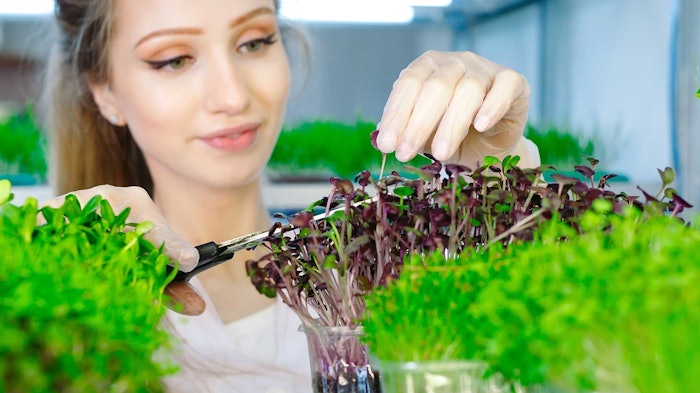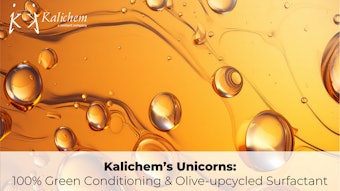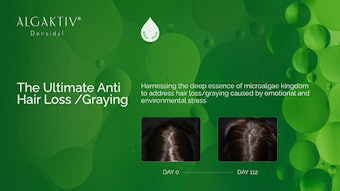
The concern for environmental issues continues to grow, especially among younger consumers. Nearly 60% of Gen Z and millennial consumers prefer buying sustainable beauty products. In addition, 57% of global consumers are willing to change their buying habits to help reduce the negative environmental impact of products.1
Log in to view the full article
The concern for environmental issues continues to grow, especially among younger consumers. Nearly 60% of Gen Z and millennial consumers prefer buying sustainable beauty products. In addition, 57% of global consumers are willing to change their buying habits to help reduce the negative environmental impact of products.1
NIQ’s 2023 Sustainable Beauty report confirms that 62% of consumers find sustainability more pivotal today than it was two years ago; although their definitions of sustainability vary widely.2 A Global Cosmetic Industry poll in January 2024 found that 69% of respondents believed consumers would be willing to pay a premium for cosmetic products that are marketed as sustainable or eco-friendly.3
In addition to consumer drivers, rising regulatory pressures have directed the cosmetic industry to reduce the environmental impact of products. For example, the European Union’s Eco design for Sustainable Products (ESPR) framework encourages beauty brands to prioritize eco-friendly packaging, emphasizing durability, repairability and recyclability.4
Increased access to information and the impact of influencers has also made consumers more aware of ingredient sources and safety. Demand has focused on clean and plant-based formulations that contain a minimum of synthetic ingredients. This has shifted the focus of ingredient manufacturers toward the development of innovative safe and natural ingredients, although these can differ in terms of sustainability.
The increased demand for naturals has also put pressure on growers to expand yield despite limited resources such as arable land, water shortages and dependency on weather. Hence, the increase in cases of deforestation, biodiversity loss, use of genetically modified seeds and pesticides, etc. As per a recent 2023 United Nations report, nearly 100 million hectares of net forest area have been lost over the past two decades. Global forest coverage decreased from 31.9% in 2000 to 31.2% in 2020. Oil palm harvesting alone accounted for 7% of global deforestation from 2000 to 2018.5
Deriving ingredients through alternate sourcing such as fermentation, upcycling and sustainable farming will be critical to address such global challenges. Indoor farming or controlled environment agriculture is one solution to fulfill the demand for sustainable ingredients. This approach supports the growth of fresh products sustainably, with minimal use of land and water and greater control over the environment including potential contaminants.
The present article describes precision climate farming to derive natural ingredients. Examples are given of arugala and cress microgreens grown in this manner, which were extracted, stabilized and tested as described here to confirm their antioxidant levels, effects on the skin and incorporation into formulations. Notably, the microgreens of plants in and of themselves have higher levels of antioxidants. Paired them with precision climate farming, however, can enhance these benefits while also reducing the impact on the environment.
Precision Climate Farming
Precision climate farming entails growing plants in an enclosed space without soil and optimizing environmental conditions such as the amount of light exposure, etc. Due to these controlled climate conditions, plants grow much faster and produce higher levels of phytoactives.6 Cultivating crops in a fully controlled climate also means there is no need for pesticides. Furthermore, on average, precision climate farming uses 80% less water than conventional farming.6
An additional measure the authors’ company has taken is using 100% green energy certified according to both ISO 9001:2015 and EFFCI from wind and solar panels to power the process. From an ecological perspective, the benefits of precision climate farming are the capacity to grow plants without dependance on the weather, less waste due to optimized and controlled conditions, and a significantly reduced carbon footprint due to less traditionally produced energy consumption.
As noted, controlling environmental parameters can impact the composition of antioxidants and other phytochemicals in plants, as will be shown in the next section. As such, for precision climate farming, the growing conditions for each plant are studied in depth and the unique environmental conditions to produce the desired phytoconstituents are created for each type of plant. By maintaining these optimum climate conditions, faster growth, lower water consumption and higher antioxidant levels in the plant are achieved. Figure 1 compares the sizes of leaves of Centella asiatica grown under normal conditions (left) versus precision climate farming (right). Clippings of both plants were taken at approximately two weeks; note that they were cultivated from the same original mother plant.
Microgreens Versus Adult Plants
Microgreens are tiny plants, the first leaves of plants after germination. They are grown from various food crops, such as vegetables, grains and herbs, that consist of fully developed or the partially expanded true leaves. They are considered the next generation of “superfoods”7 and contain high levels of vitamins and antioxidant compounds; for example, vitamins C, E and K, and carotenoids like β-carotene, lutein and zeaxanthin. Levels of these entities in microgreens are much higher, in some cases up to 10×, that of grown plants.8
One reason microgreens have a higher concentration of antioxidants than the adult plants8 is because they need greater protection when they are exposed to external environmental factors. Using microgreens in skin care therefore provides greater antioxidant capacity with less plant matter. This, again, translates to less use of water, energy and nutrients as well as land.
Cress (Lepidium sativum), known as garden cress or Swiss cress, holds great interest for food and cosmetics applications due to its excellent antioxidant properties. The principal antioxidant constituents include phenols, essential amino acids, minerals and vitamins. These are present in greater concentrations in microgreens and when used in skin care applications, they help to protect the skin against damage caused by external factors such as UV, pollution, etc.9
Arugula (Eruca sativa), also known as rocket, is a green leafy plant that belongs to the Brassicaceae family. Since Roman times, arugula has been prized for its unique flavor and nutritional qualities. Arugula microgreens also contain health-promoting compounds such as antioxidants, vitamins and minerals.10 They also impart antioxidant, anti-inflammatory and regenerative properties in skin care.
These microgreen sources were extracted and stabilized in a proprietary process, as described next. The extracts were then tested for antioxidant capacity and moisturizing effects, following which they were assessed for efficacy in a waterless makeup remover balm formula.
Green Extraction and Internal Stabilization
The extraction of microgreens was carried out without synthetic solvents or stabilizers, avoiding the use of additional energy to remove solvents and maintaining the optimum active content without undesired residues. This process utilizes machines powered only by certified green electricity to offset CO2. The products also were internally stabilized, which increases their shelf life and stability multifold.11
Internal stabilization, as referred to here, is a proprietary process developed after years of research in lipids and food antioxidants. It results from a fully controlled production process, from initial plant selection through final output.
Throughout the process, measures are taken to protect the oil against any heat damage. During refining, conditions also are chosen to minimize the loss of natural antioxidants present in the oil. By completely arresting oxidation and thereby avoiding the development of degradation products, the ingredient’s natural antioxidant properties are retained. This also avoids flocculation problems in formulations.12
This approach greatly differs from the most common way to avoid oxidation, which is by externally adding, through simple mixing, antioxidants to oils and butters. Such additions often require heating, homogenization, extra labor and handling powders. All of these steps are bypassed with internally stabilized oils – and internal research has shown this process enhances oxidative stability many-fold (see Figure 2).
Antioxidant Capacity
A typical DPPH (2,2-diphenyl-1-picrylhydrazyl) assay was used to compare the antioxidant activity of a precision-farmed cress microgreen oil extract versus one commercially available. Cress microgreens from precision climate farming (CRM PCF) were harvested, and from a grocery store were purchased (CRM EXT), then dried in an oven and ground into powder. These powders were extracted into oil and tested via DPPH assay. Results are shown in Figure 3 and clearly demonstrate the higher antioxidant capacity of the precision-farmed extract.
Moisturizing Efficacy
As shown, the precision-farmed cress microgreen oil had increased antioxidant potential. Quantifying this antioxidant level demonstrates the transfer of actives from the plant to the extract. Such actives can protect skin against damage and, in turn, help to maintain moisture levels while reducing trans-epidermal water loss. Added moisturizing effects would also be expected from the base oil acting as an emollient.
As such, an in-house study was carried out with 10 in-house lab volunteers to assess TEWL and skin hydration before, during and after the application of both arugula and cress microgreen extracts in vegetable oil. Measurements taken 30 min and even 240 min after application demonstrated improvements in both TEWL and skin hydration, compared with T0 base values (see Figure 4).
Formulating Sustainable Products
As a next step, the efficacy of the microgreen extracts was assessed in a test formula aligned with the tenets of precision climate farming: a waterless cleansing makeup remover balm (see Formula 1). Traditional cosmetic products tend to consume a significant amount of water during production and application.13 As a valuable resource, water and its scarcity and sustainable management are growing concerns.
In response, manufacturers are focused on water conservation techniques such as recycling and re-using water, implementing more efficient production methods, and creating formulations that require less water.14 Hence, waterless and solid cosmetic applications have gained consumer interest. Waterless and solid cosmetics use less water during production and application compared to traditional products. They may even require less packaging and are hence a more sustainable form.15
Aligning with the need for water-conscious formulas, as well as consumer demand, a waterless cleansing balm was formulated using the described microgreen extracts from precision climate farming. To demonstrate the efficacy of the formulation, an in-house pilot study was conducted.
Test protocol: Makeup products were applied on the lower arm. A small quantity of makeup remover balm was applied to the lower arm, massaged for 1 min and wiped off with a cotton pad. Figures 5a-b demonstrate the before/after application of the makeup and makeup remover balm.
Results: The study clearly shows that the formulation using the microgreen extracts and other natural and sustainable ingredients successfully removed the makeup products. Notably, it achieved efficacy without synthetic emollients or surfactants or solvents such as ethanol.
Summary
Precision climate farming opens up new opportunities to develop sustainable, optimized, high-quality cosmetic ingredients. As shown here, microgreens grown using precision climate farming demonstrated a higher concentration of antioxidants, which is of interest to the cosmetics industry. The method also offers a reliable and sustainable source of ingredients and ensures beauty brands can continue to create innovative products while respecting the health of the planet.
Precision climate farming additionally encourages the cultivation of plants in a manner that respects their natural growth cycles, ensures their long-term survival and conserves biodiversity, reducing pressure on ecosystems caused by excessive agricultural practices. It is therefore possible, with new approaches such as these, to supply the growing number of conscious consumers with high quality, natural-based cosmetic products that remain focused on sustainability.
References
1. Wells, T. (2023, Oct 5). 75 Revealing sustainable fashion and beauty industry statistics and trends. Sustainable Bliss. Available at https://ethicalbliss.com/sustainable-fashion-and-beauty-industry-statistics-and-trends/
2. NIQ. (2023, Nov 20). Trends in sustainable beauty. Available at https://nielseniq.com/global/en/insights/analysis/2023/trends-in-sustainable-beauty-2023/
3. Global Cosmetic Industry. (2024, Jan 2). Consumers are willing to pay a premium for cosmetic products that are marketed as “sustainable” or “eco-friendly” [poll results]. Available at https://www.gcimagazine.com/polls/news/22882723/consumers-are-willing-to-pay-a-premium-for-cosmetic-products-that-are-marketed-as-sustainable-or-ecofriendly-poll
4. The Ink Tank. (2023, Dec 1). Sustainable packaging regulations coming for cosmetics and beauty brands in 2024. Available at https://www.kaocollins.com/inktank/sustainable-packaging-regulations-coming-for-beauty-brands/
5. United Nations. (Accessed 2024, May 17). Life on land. Available at https://unstats.un.org/sdgs/report/2023/Goal-15/
6. Mellerup, M. and Shukla, V.K.S. (2020 June). Vertical farming. Happi, 66-69.
7. Baylor, A. (Accessed 2024, May 17). Microgreens: A drought tolerant super food? Medium. Available at https://medium.com/invironment/microgreens-a-drought-tolerant-superfood-c0fb6bdbb7db
8. Zhang, Y., Xiao, Z., Ager, E., Kong, L. and Tan, L. (2021, Sep). Nutritional quality and health benefits of microgreens, a crop of modern agriculture. Journal of Future Foods, ScienceDirect. Available at https://www.sciencedirect.com/science/article/pii/S2772566921000057
9. Shah, M., Dudhat, V. and Gadhvi, K. (2021). Lepidium sativum: A potential functional food. Journal of Ayurvedic and Herbal Medicine. Available at www.ayurvedjournal.com/JAHM_202172_13.pdf
10. Komeroski, M.R., Portal, K.A., Comiotto, J., Klug, T.V., Flores, S.H. and Rios, A.d.O. (2023). Nutritional quality and bioactive compounds of arugula (Eruca sativa L.) sprouts and microgreens. Int J Food Sci Technol, 58: 5089-5096.
11. Shukla, V.K.S. (2019, Jun). Rejuvenating green and clean cosmetics via internally stabilized organic lipids. Happi, 72-74.
12. ICSC. (Accessed 2024, May 17). Internal stabilization. Available at https://icsc.dk/internal-stabilization/
13. COSSMA. (2023, Sep 6). Greener cosmetic formulations. Available at https://www.cossma.com/ingredients/article/greener-cosmetic-formulations-36818.html
14. Gruber, B. (2023, Jun 27). Prospects and challenges for sustainable beauty formulations. Cosm & Toil. Available at https://www.cosmeticsandtoiletries.com/magazine/article/22865980
15. Chidley, J. (2023, Oct 27). Formulating zero waste cosmetics. Cosm & Toil. Available at https://www.cosmeticsandtoiletries.com/formulas-products/formulating-basics/article/22874120/formulating-zero-waste-cosmetics











